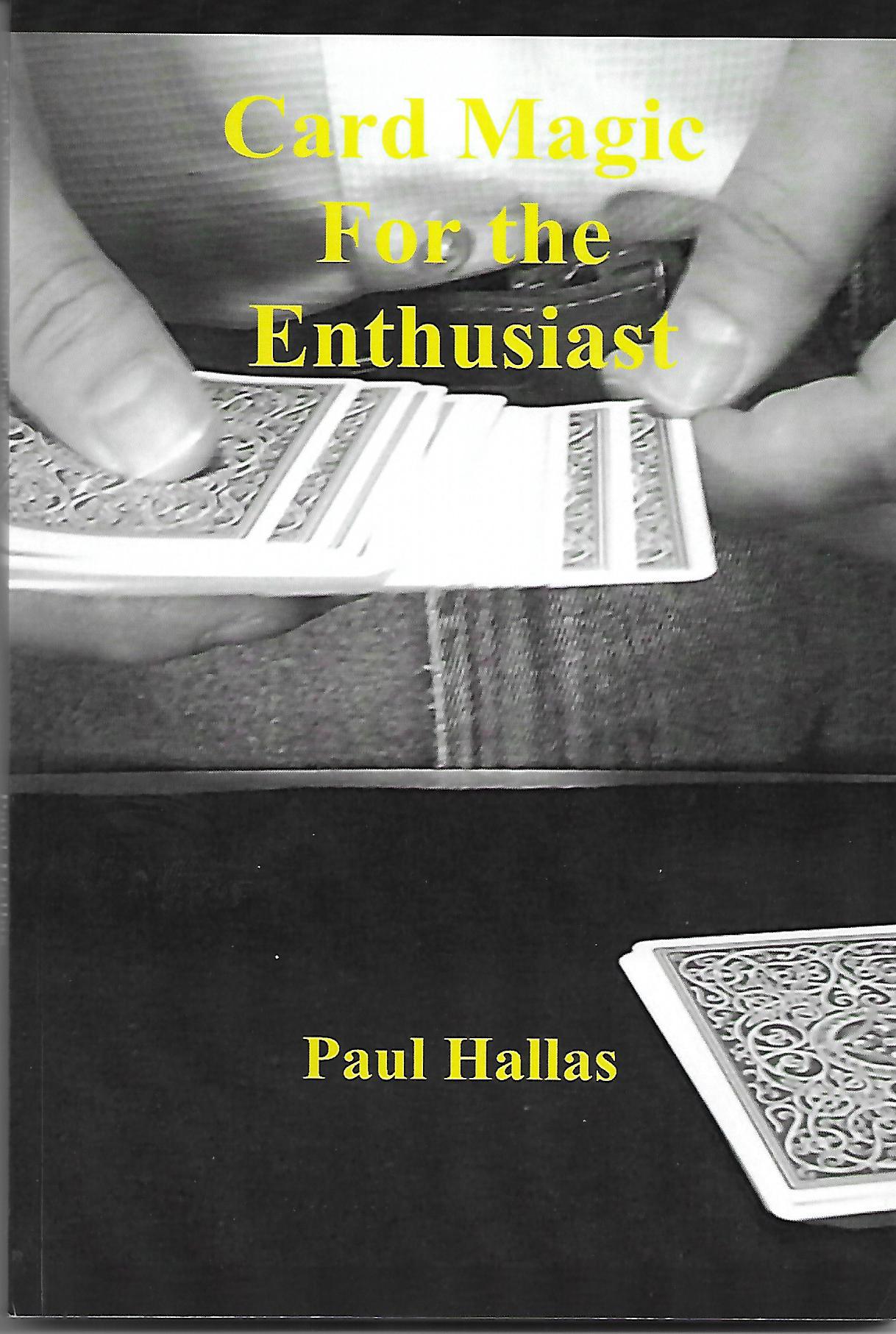 |
|||||||||||||||||||||||||||||
|
|
|||||||||||||||||||||||||||||
 |
|||||
|
Card Magic for the Enthusiast - Paul Hallas The Hype: Paul Hallas released his first magic book in 1979 And the creative bug has remained with him ever since. His main interests are close up magic (mainly cards) and mentalism and his books reflect that, having written perhaps the most well known book on 'packet tricks', a book just on one card plot 'Across the Void"(the cards across plot) and a book on the use of various types of cards in mentalism, "Mentalism With Cards". He has authored over a dozen books and contributed articles to various magic magazines over the years.He is a professional entertainer who now lives in Florida Welcome back to another compelling compilation of clever card conjuring for the card magic enthusiast. This book is not intended for beginners as some knowledge of card magic is already expected, but there is nothing contained to bust your knuckles. It's guaranteed the card enthusiast will find a number of routines to whet his appetite, so why are you wasting time reading this, get your cards out for the first effect! My Take: Years ago, I saw a book reviewed in a magazine and I wanted it. That book was "Small But Deadly - The Packet Trickster's Handbook" by Paul Hallis. The only problem was that it was only available directly from Paul and he lived in England. So I passed it by.Then H&R decided to publish it and I was finally able to get a copy. To this day, the is the only magic book that I own that I have read cover to cover multiple times. If you don't have it yet, buy it! That was just to let you know what high regard I hold Paul in. Including this new tome, I now own five books by him. Each is loaded with clever and deceptive card routines and this is no exception. Nick Trost was famous for making killer tricks using subtleties rather than knucklebusting moves. Paul has followed the same path in his writings. Simple to do but they pack a punch. The book encompasses over twenty routines plus Paul comments on multiple card revelations and his techniques on the Pinky Ovette, Center Double Control and the Simple Double Card Control. Everything is explained in great details. For some of the routines requiring a little more advanced handling, Paul has given an alternate, simpler method. He also extensively credits moves and inspirations from his sources. For me, that has sent me to my bookshelf looking up the originals of several of the routines. With so many routines, I obviously cannot hit everyone but let me tell you about some that appealed to me. Under Pressure - The opening routine in the book. Your spectator chooses a card which is then lost into the deck and shuffled. The magician removes two cards which are his prediction. As they are turned over, the spectator says that is not his selection. The magician says maybe one of the cards is the suit and the other the value, He then proceeds to melt the two cards into the selection. Easy to do and can be done from a borrowed shuffled deck. No gaffs. Nice piece. Traveler in Time - Paul's salute to the old clock trick. Months are used instead of times and he story line propels the routine along. His handling effectively disguises the roots of the routine and leaves a nice fooler. Gaffs are used in a couple of the routines and you might have to make up your own as they don't seem to be the standard gaffs. In Simple Addition, a packet of four 10 of Spades and a second of 4 of Spades is shown. They are combined and the result is the four 14 of Spades. The Tree of Knowledge will require you to make up four cards. However this can have more than one application. Most will do just the standard routine but it can also be easily adapted for a Christian audience as it features Adam and Eve and the famous apple. I have always enjoyed tricks with the ESP Zener deck.. However, almost every routine is a math based method. Paul has given me two great routines using this deck. Up/Down Oil and Water also features one of my favorite plots. However, using the Zener cards works better than using a standard deck as using identical cards covers a variety of sins. Soft curve uses a technique called the Dudeney Folding Procedure which was published as a puzzle by Henry Dudeney in 1926. I first became aware of the principle in a routine called Automatic Ace Triumph by Kuniyasu Fujiwara in a book called "Japan Ingenious" by Steve Cohen and Richard Kaufman. Tony Dunn also showed me a nice version of it. What makes this version different is his use of Zener cards. With the large graphics, it actually becomes more deceptive. And if you don't like using the Zener deck, Paul also offers a version with regular cards, the Dudeney Coincidence. Whenever I receive a new book by Paul in the mail, I know my next few nights will be spent reading with a deck of cards in my hand. This is loaded with stuff that is both simple to do and deceptive (not to mention entertaining). Conclusion: Would I recommend this book? As a former vice presidential candidate once said (on multiple occasions), "You betcha!" |
|||||